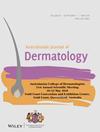Psychosocial Determinants and Atopic Dermatitis Outcomes: A Cross-Sectional Study From an Australian Paediatric Centre
Abstract
Background
Atopic dermatitis (AD) significantly impacts quality of life, with well-documented physical and psychological consequences. While disease burden is well characterised, the influence of psychosocial determinants on AD outcomes remains underexplored. This study examines these factors in an Australian paediatric population.
Objectives
To investigate whether children from populations at risk of health inequities—such as those from rural areas, culturally diverse backgrounds, First Nations communities, socioeconomically disadvantaged postcodes, those with neuropsychiatric conditions and ‘Vulnerable’ children (defined as those under state or relative care or with a history of familial abuse or neglect)—experience more severe disease.
Methods
This retrospective cross-sectional study included children ≤ 16 years with confirmed AD attending a tertiary paediatric referral centre in Melbourne (Aug 2022—Aug 2023). Risk factors were defined by social determinants of health, including economic, cultural and geographic influences. Disease outcomes (severity, hospitalisations, emergency department visits treatment patterns) were analysed using univariate and multivariate methods. A total of 454 at-risk children were compared to 454 controls.
Results
Children from at-risk groups were more likely to have severe AD (43.8% vs. 28.3%, p < 0.001), higher annual rates of hospital admissions, increased antibiotic use, and greater prednisolone use for flares (p < 0.001). Multivariate analysis revealed significantly higher odds of severe AD (aMOR 4.72, p < 0.001) and hospitalisation (aIRR 2.73, p < 0.001) in the at-risk cohort.
Conclusion
Psychosocial determinants of health are associated with increased AD severity and healthcare use in children. These findings highlight the need for targeted, equity-focused interventions to reduce disparities in AD care in Australia.


 求助内容:
求助内容: 应助结果提醒方式:
应助结果提醒方式:


